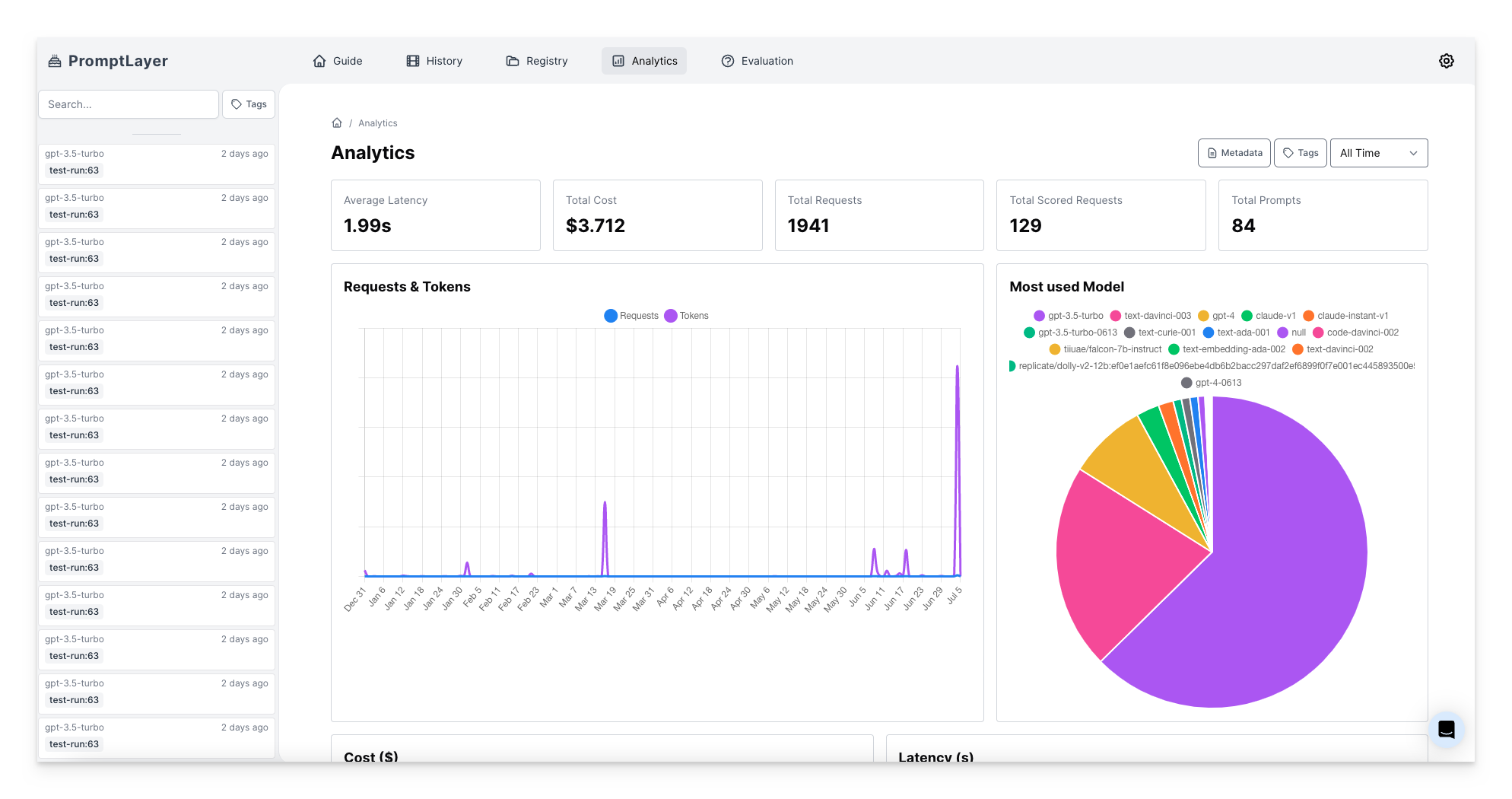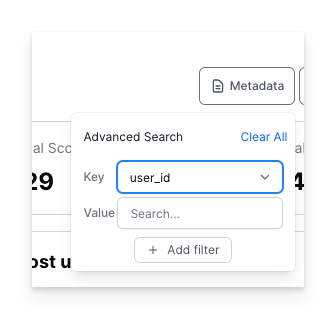Skip to main contentThe Analytics page provides valuable insights into the performance and usage of your application. By leveraging various features and metrics, you can make data-driven decisions to optimize your application and enhance user experience. This documentation will guide you through the different analytics features available.

Metrics
Here you can find key performance indicators to assess your application’s performance and track its usage. Metrics include: average latency, total cost, and total requests. These metrics provide valuable information on response time, financial impact, and usage volume.
Analyzing Usage Patterns
Understanding usage patterns is crucial for optimizing your application and improving user experience. Analyzing usage patterns involves exploring prompt registry states, model distributions, tokens and requests over time, latency and cost analytics, and prompt template overall costs. These features provide insights into how prompts, models, and resources are utilized, helping you make informed decisions to enhance your application’s performance.
Filtering and Organization
To streamline your analysis, the analytics page offers filtering options based on metadata and tags.
 You can filter the analytics page using metadata attributes such as user ID, location, version, and more. This allows you to narrow down the data and focus on specific segments for in-depth analysis.
You can filter the analytics page using metadata attributes such as user ID, location, version, and more. This allows you to narrow down the data and focus on specific segments for in-depth analysis.
Tag Filtering
Tag filtering allows you to categorize and organize your requests based on specific tags you assign. It simplifies the process of analyzing specific groups of requests, making it easier to identify trends and patterns. 


